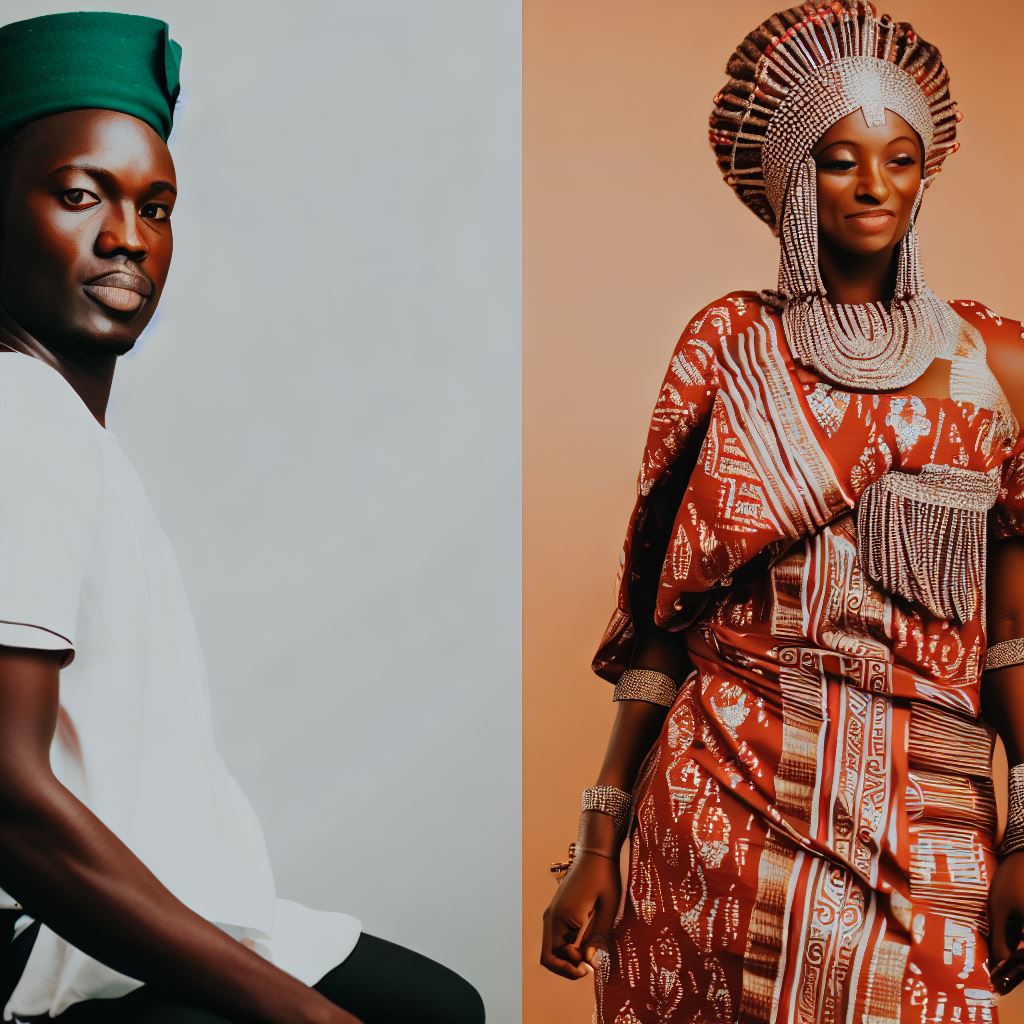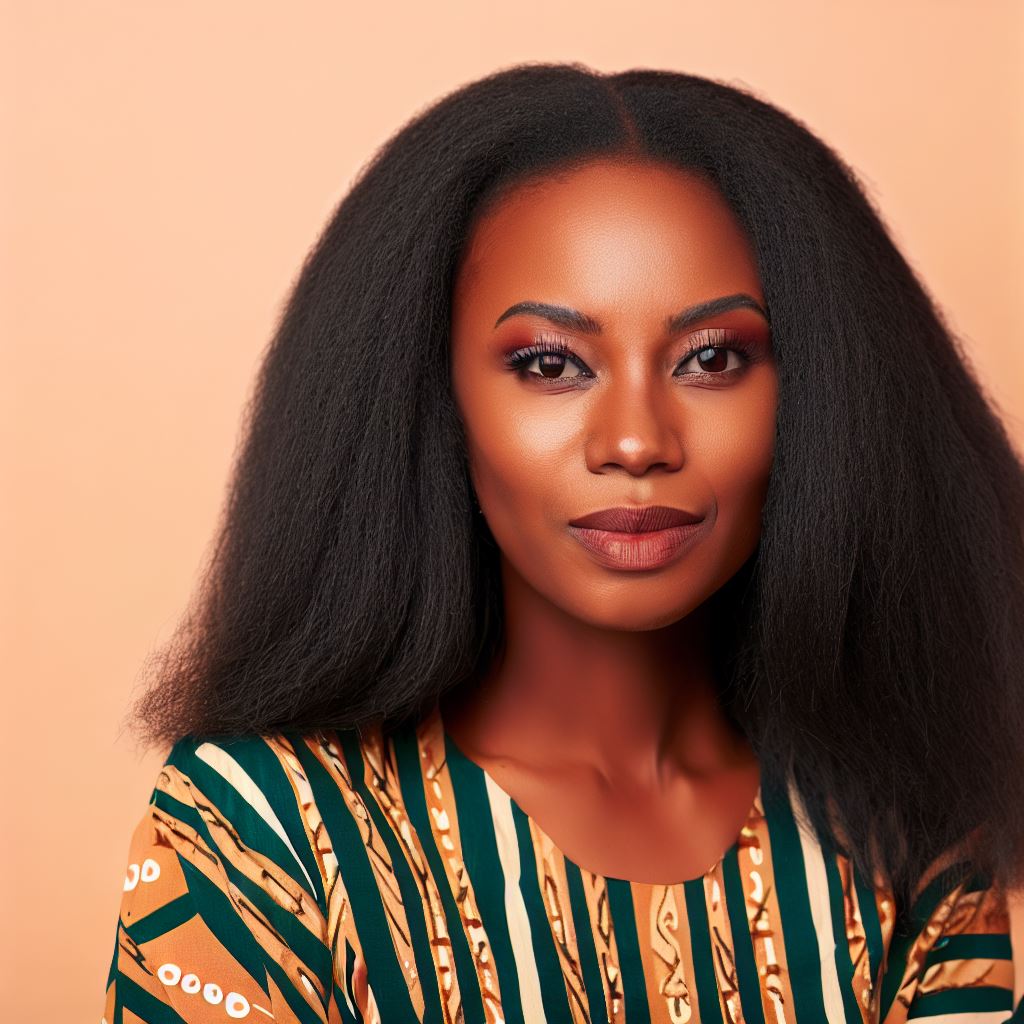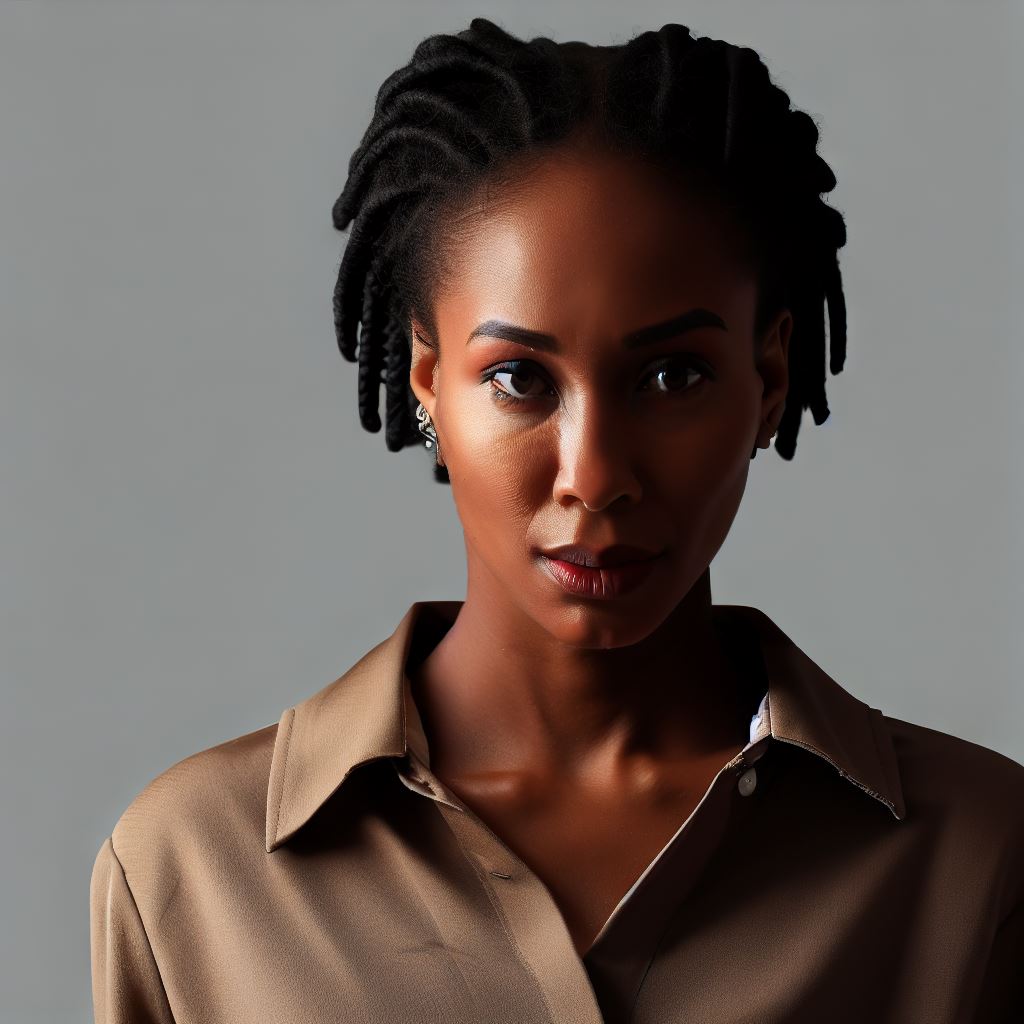Introduction
Design Aesthetics in Nigerian Culture
Design aesthetics hold immense cultural importance in Nigeria, reflecting heritage and shaping modern expressions.
Purpose Statement
This blog post explores the dynamic interplay between traditional and modern design aesthetics in Nigerian culture.
Traditional Design Aesthetics
Characteristics of traditional Nigerian design aesthetics:
- Bold and vibrant colors that reflect the rich cultural heritage of Nigeria.
- Intricate and detailed patterns that evoke a sense of tradition and craftsmanship.
- Use of organic and natural materials such as wood, clay, and textiles.
- Incorporation of symbolic elements and motifs that hold cultural significance.
- Attention to detail and craftsmanship that bring out the uniqueness of each design.
Influence of cultural heritage, rituals, and symbolism on traditional designs
- The cultural heritage of Nigeria’s diverse ethnic groups deeply influences Nigerian design aesthetics.
- Traditional rituals and ceremonies play a significant role in shaping the design aesthetics.
- Design employs symbolism actively to convey meaningful messages and narrate stories.
- Designs often reflect the spiritual beliefs and practices of Nigerian culture.
- Traditional designs are a way to preserve and celebrate cultural traditions and identity.
Specific traditional design elements: patterns, colors, and motifs
- Geometric patterns such as zigzags, diamonds, and triangles are commonly used.
- Bright and bold colors like red, orange, and green are prevalent in traditional designs.
- Motifs inspired by nature, animals, and human figures are commonly used.
- Designs actively incorporate traditional symbols like the Adinkra symbols and the Nsibidi writing system.
- Traditional textiles like the Aso Oke and Akwete are known for their distinct patterns and colors.
Materials and techniques used in traditional Nigerian design
- Artisans popularly use wood carving as a technique to craft intricate and decorative objects.
- Clay is used to make pottery and sculptures that showcase the traditional design aesthetics.
- Beadwork is a traditional technique used to adorn clothing and accessories with beautiful designs.
- Textiles are woven using traditional looms and dyed with natural dyes.
- Embroidery and appliqué are used to enhance textiles with intricate patterns and motifs.
Traditional Nigerian design aesthetics feature bold colors, intricate patterns, and incorporate cultural symbols and motifs, defining their characteristics.
They reflect the rich cultural heritage, rituals, and symbolism of Nigerian culture. The use of organic materials and traditional techniques further enhances the uniqueness and craftsmanship of the designs.
Traditional design elements such as patterns, colors, and motifs play a crucial role in expressing cultural identity and preserving cultural traditions.
By understanding and appreciating traditional design aesthetics, we can celebrate the beauty and diversity of Nigerian culture.
Read: Spotlight on Top Nigerian Designers: Who’s Shaping the Future?
Modern Design Aesthetics
Explaining the Emergence of Modern Design Aesthetics in Nigerian Culture
The emergence of modern design aesthetics in Nigerian culture can be attributed to several factors.
Discussing the Influence of Globalization, Urbanization, and Technology on Modern Designs
Globalization, urbanization, and technology have significantly influenced modern designs in Nigerian culture.
Highlighting Specific Modern Design Elements such as Minimalism, Abstraction, and Contemporary Patterns
Modern design in Nigeria incorporates elements like minimalism, abstraction, and contemporary patterns, creating unique aesthetics.
Explaining the Materials, Tools, and Techniques Used in Modern Nigerian Design
Modern Nigerian designs employ diverse materials, tools, and techniques to craft innovative aesthetics, reflecting a fusion of tradition and contemporaneity.
Globalization’s influence on Nigeria’s cultural landscape has fostered the adoption of modern design elements, enriching the nation’s creative tapestry.
Urbanization drives the demand for sleek, modern designs in urban settings, accommodating fast-paced lifestyles and urban sensibilities.
Technological advancements, particularly digital tools, enable designers to experiment, create abstract, and minimalist designs, pushing the boundaries of creativity.
Modern design elements in Nigeria encompass minimalism, abstraction, and contemporary patterns, achieving a harmonious blend of the old and new.
Designers ingeniously combine materials like wood, textiles, glass, metal, and plastics, and expand possibilities using innovative tools like 3D printers.
Essentially, modern Nigerian design aesthetics, shaped by globalization, urbanization, and technology, showcase a harmonious fusion of tradition and innovation.
Diverse materials, tools, and techniques empower designers to create captivating, contemporary expressions of Nigerian culture.
Read: Understanding the Role of Women in Nigeria’s Design Scene

See Related Content: Tips for Aspiring Designers: Starting a Career in Nigeria
Explore Further: Understanding the Role of Women in Nigeria’s Design Scene
Aesthetic Preferences and Tensions
Reasons Behind the Shift from Traditional to Modern Design Aesthetics in Nigeria
- The influence of globalization and exposure to international design trends.
- The desire to embrace modernity and be seen as progressive in a global context.
- The need for functionality and efficiency in a rapidly evolving society.
- The appeal of modern aesthetics in aligning with urban lifestyles and aspirations.
- The availability of new materials and technologies that enable modern design possibilities.
Cultural, Social, and Economic Factors Contributing to the Preference for Traditional or Modern Aesthetics
- Cultural preservation and the importance of maintaining traditional identity.
- The influence of social norms and peer pressure in shaping aesthetic preferences.
- The economic status and affordability of traditional or modern design options.
- Perceptions of prestige and social status associated with traditional or modern aesthetics.
- The influence of media, advertising, and popular culture in promoting certain aesthetics.
Tensions or Conflicts Between Traditional and Modern Design Aesthetics in Nigerian Culture
- Challenges in finding a balance between preserving cultural heritage and embracing modernity.
- Resistance from traditionalists who view modern aesthetics as a threat to their cultural values.
- Conflicts between generations with different aesthetic preferences and understandings of tradition.
- Debates regarding the authenticity and appropriateness of adopting modern aesthetics within Nigerian culture.
- The risk of cultural homogenization and the loss of unique traditional design principles.
Nigeria experiences a notable shift from traditional to modern design due to globalization, exposing Nigerians to international design trends, fostering a desire for progress.
The evolving society demands functional and efficient modern aesthetics, catering to urban aspirations and the younger generation.
Availability of new materials and technology fuels the preference for modern aesthetics, unlocking innovative design possibilities.
Tensions arise as Nigerians grapple with preserving cultural heritage while embracing modernity, risking cultural authenticity.
Generational conflicts emerge between younger, globally influenced individuals favoring modern aesthetics and older generations valuing tradition.
Debates center on authenticity and appropriateness in adopting modern aesthetics, fearing cultural homogenization and loss of traditional principles.
Complex interplay of cultural, social, and economic factors shapes aesthetic preferences in Nigeria, challenging designers to balance tradition and progress.
Read: A Guide to Building a Design Career in Lagos, Nigeria
Contemporary Nigerian Designers
Showcase notable contemporary Nigerian designers who incorporate traditional design elements in their work.
- Deola Sagoe: Known for her innovative blend of traditional Nigerian fabrics with modern silhouettes.
- Ituen Basi: Celebrated for her use of vibrant African prints in contemporary designs.
- Lisa Folawiyo: Renowned for her fusion of traditional African textiles with modern aesthetics.
- Amaka Osakwe: Emphasizes the use of traditional hand-woven fabrics in her fashion designs.
Highlight their contributions to the preservation and evolution of Nigerian design aesthetics.
- By incorporating traditional design elements, these designers honor and promote Nigerian cultural heritage.
- They contribute to the preservation of traditional craftsmanship and techniques through their creations.
- Through collaborations with local artisans, they support and empower Nigerian communities.
- These designers challenge traditional perceptions of Nigerian fashion, leading to its evolution on a global scale.
Provide examples of successful integration of traditional and modern design aesthetics in their creations.
- Deola Sagoe’s collection features modern silhouettes adorned with intricate Nigerian beadwork and embroidery.
- Ituen Basi combines traditional African prints with contemporary tailoring, creating unique and stylish garments.
- Lisa Folawiyo incorporates traditional Adire fabric into modern and chic dresses, blouses, and accessories.
- Amaka Osakwe’s designs merge traditional hand-woven fabrics with modern cuts, resulting in sophisticated and elegant clothing.
These contemporary Nigerian designers successfully integrate traditional and modern design aesthetics, creating a distinctive style that transcends cultural boundaries.
Their innovative approach not only preserves Nigerian design heritage but also propels it forward, garnering international acclaim and recognition.
Read: An Introduction to Costume Designing in Nigeria’s Film Industry
Conclusion
In this blog post, we explored the fascinating world of design aesthetics in Nigerian culture.
We highlighted the richness and diversity of Nigerian design, from traditional to modern.
It is important for readers to appreciate and celebrate both traditional and modern design aesthetics in Nigerian culture.
By embracing the beauty of Nigerian design in all its forms, we can truly acknowledge and honor the artistic heritage of this vibrant nation.




